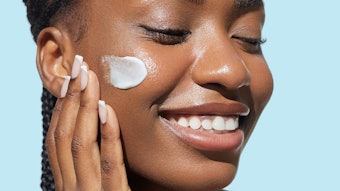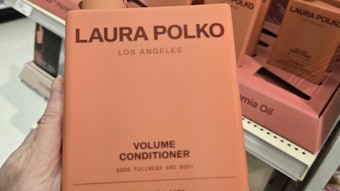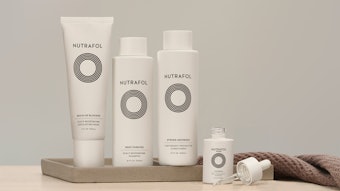
When it comes to hair care, not all products or ingredients are created equal, and no one knows this better than Vaishali Gode, PhD, head of advanced technology development for Marico Ltd. Gode has seen many technologies change the shape of hair care during her 15 years in the industry, and her research on actives and technologies continues to drive hair care innovation. Following is a sampling of trends she is currently seeing, tips for hair care formulators and an outlook on where hair care technology is headed.
C&T: What ingredient trends are you seeing in hair care?
Hair care has witnessed a surge in activity in recent years. A clear trend is using actives that enable cosmetic companies to make stronger claims and provide top-end benefits to consumers. Some of these actives are derivatives of drugs, especially for benefits like reduction in hair loss. Peptides and amino acids are also being used for their health benefits to hair. Another trend is to use plant-derived stem cells in formulations, which is more for biological benefits like the prevention of hair loss or improvement in hair density, etc.
Currently, oils are finding their way into formulations in a big way, particularly in the South Asian subcontinent, where oils such as argan, olive, almond and coconut are being used. For physical modifications, silicones continue to rule the roost, and formulations that provide instant benefits such as shine or softness are being used extensively.
C&T: What research topics are hair care formulators exploring?
Pigmentation and prevention of hair loss top the list for research in hair care. Besides these, safer and longer-lasting hair styling technologies such as colors, technologies for hair straightening and perming are being researched. There is also a lot of research being conducted on understanding hair as a fiber and the correlation of the fiber properties of hair and their relevance to the consumer. The technical measurements of hair may not always correlate well with consumer grooming habits and the way consumers assesses their hair physically. Hence, a lot of work is being conducted to draw a correlation between the two. New actives that can benefit hair are also being researched.
C&T: What formulation technologies have revolutionized hair care?
New technologies like micro and nano emulsions are currently being investigated. However, there are some controversies on the safety aspects of these technologies. Also, new technologies that can modify the appearance of hair—such as hair color, hair straighteners and perming agents—have changed the way consumers look at hair, and have given the consumer an opportunity to experiment. It has also increased the repertoire of hair grooming products.
C&T: What are some challenges encountered when formulating an organic/natural hair care product?
The main challenge is the sensory appeal of the product. Most natural products have a strong inherent color or odor. At levels that show efficacy, the color or odor may be difficult to camouflage. Given the seasonality of natural ingredients, sourcing also can be a big challenge. Furthermore, purifying natural extracts can lead to loss of activity in formulation.
C&T: What are the hardest types of hair care products to formulate and why?
Hair treatments are usually relatively difficult to formulate since the pH, color shade and viscosity of the formulations can greatly affect the performance and sensorial attributes of the product. Also, formulations with natural actives are difficult to formulate since it involves masking the color and odor of the actives while still maintaining their activity.
C&T: How does regulation impact formulation of hair care products?
Regulation and safety are critical for hair care formulations. As claims on hair care formulations have become stronger, regulators have begun challenging the claims being made by cosmetic companies. Often the claims tend to be exaggerated, and such claims need to be critically evaluated.
C&T: What are common mistakes made by formulators when creating a hair care product?
A formulator needs to first understand how a consumer uses the product. Then they should identify the key indicators of the benefit desired by the consumers. For example, in shampoos, the amount of foam can be an indicator of the cleansing efficiency or the rinseability of the formulation. Long-lasting fragrances could also denote long-lasting effect. These need to be understood, and the formulation needs to be designed to deliver those key attributes.
C&T: What tools or advice can help a formulator who is just entering the hair care market segment?
Having a good mentor can be a big help, as most learning comes from experience—doing things, making mistakes and doing things again.
C&T: Is it possible to create a hair care formulation that can be used by all hair types?
If so, what are its key attributes? Yes, it is possible to have a general hair care formulation for all hair types. These are usually basic formulations for maintaining otherwise healthy hair. These formulations could be for basic cleansing and hair manageability, and should not overly dry or weigh down hair. They should, therefore, have moderate surfactant levels and moderate conditioning.
C&T: What is on the horizon for hair care?
Preventing hair loss continues to be a focus for hair care researchers. Instant and safe hair modifiers such as colors, straighteners or perming actives will continue to grow. Hair protection will also be a new need, and products for treated hair will find even bigger scope in the market. Safe, lower cost and long-lasting hair care products that are beneficial for the look and health of hair will be the key focus.










